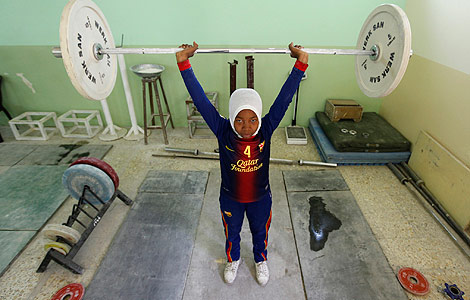Nation needs to upgrade poultry, livestock industries
Updated: 2013-05-09 22:06
(chinadaily.com.cn)
|
|||||||||||
The Chinese Ministry of Public Security recently released the top 10 meat safety-related cases uncovered this year. These cases have created a crisis of confidence among consumers and also have exposed loopholes in the meat-safety supervision system, says an article on cnhan.com. Excerpts:
Among the 10 cases, only one involves a food company in the Inner Mongolia autonomous region, and the rest are offenses committed by self-employed businesses, which exist in large number nationwide and have remained major targets in a series of crackdowns.
A defining feature of the livestock and poultry breeding industries in China is that a large number of farmers are engaged in the business without following certain standards in breeding, slaughtering, processing and transportation, which makes it difficult to supervise the safety of the product. In March, thousands of dead pigs floated down the Huangpu River in East China, shocking the country. Jiaxing in Zhejiang province is believed to be the source, but many local farmers have denied that, and so far, no party has claimed responsibility for the incident.
Some people insist that self-employed breeding is part of the market mechanism, and with the market growing mature, more and more farmers will be driven out of the business because of the low quality of their product and their poor cost control. This is true of many industries, but considering the delicate nature of the food industry, consumers simply cannot afford to wait until the market corrects itself.
China therefore needs to speed up efforts to upgrade the livestock and poultry breeding industries. This is not to say large-scale operations can guarantee food safety. After all, many well-established brands have been involved in food safety scandals before. However, operating and managing the breeding sector on a large scale can better create brand recognition and lower production costs, and more importantly, make supervision easier.
Related Stories
Investigators probe mysterious deaths of livestock 2013-04-18 22:08
Livestock, poultry farms a big source of pollution 2013-04-10 21:11
Rules promote livestock rights 2012-11-20 01:01
It's safe to eat poultry: experts 2013-04-29 20:37
Poultry wet market likely source of H7N9 virus 2013-04-27 00:33
Today's Top News
China to use existing mechanisms in border issues
China does not accept Japan's protest
Chinese president meets Israeli prime minister
5 missing after E China ship collision
Free funeral service available for poor people
Govt, UN participate in environmental program
China fines 88 companies for polluting water
Chinese now largest foreign-student nationality
Hot Topics
Lunar probe , China growth forecasts, Emission rules get tougher, China seen through 'colored lens', International board,
Editor's Picks

|

|

|

|

|

|





